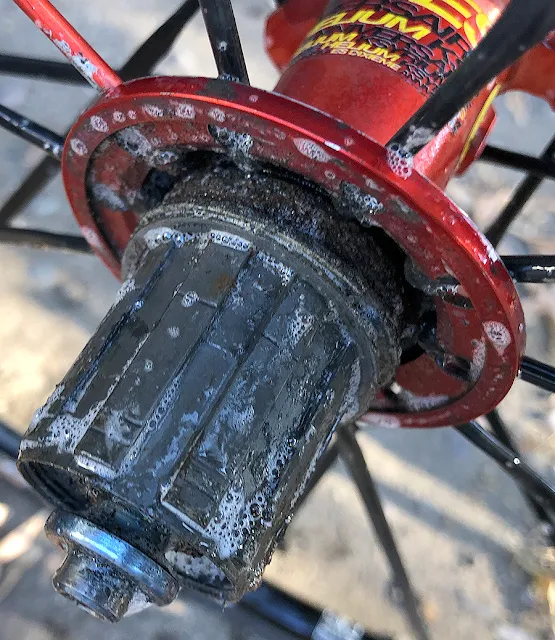I had glued a plastic reinforcement behind the tearing part of the plastic of the top strap.
I removed the plastic & cleaned off the last adhesive I had tried, using a sharp blade.
After cleaning off the left over adhesive, I made a cardboard template for a sheet metal reinforcement.
The white material is the cardboard template.
I traced the template onto a small piece of stainless steel sheet that I already had (leftover from something I had bought years ago).
I had gone to the local hardware store to buy some small machine screws and nuts.
I wasn't sure which of two sizes that appears to be about the right size would be best. So, I bought a dozen of each of the two sizes.
This is even smaller than the #4.
I decided to use these on the repair...
I held the sheet metal reinforcement in place using these spring clamps and drilled the holes for the screw on my drill press.
The hole is a hair undersized so the screws had to be "threaded" through the holes.
It made for a very tight fit with no slop at all.
The blue color is a protective film on the stainless steel.
I removed it once all the holes were drilled.
Decided to use 5 screws.
I drilled this one hole too close to the others so the nut was a very tight fit.
I managed to get the nut on with some "persuasion."
Done.
Will try it out later today on a ride...
My other pair of the same bike shoes, where the entire part had completely separated.
I decided to do a similar repair as the pair above.
But, since it's completely separated, I had to put a reinforcement plate on both the bottom and the top of the strap.
I made paper templates & cut the stainless steel.
The top reinforcement had to be bent in an "S-curve" to conform to the shape of the plastic and the strap.
Same hole drilling process as the other pair of shoes (also used a de-burring bit to clean up the holes after drilling).
Used six screws.
The screws on the strap material actually go through a piece of plastic that's still inside the strap.
The three screws that go through the strap are too long.
Used a thin cut-off wheel (on an air tool) to cut off the screws.
Done.
Both repairs need to last a few weeks/months.
I plan to buy some new shoes early next year...
Went for a ride.
The "bodge" #3 held up, for now.
The repair on this pair is pretty un-noticable...









































